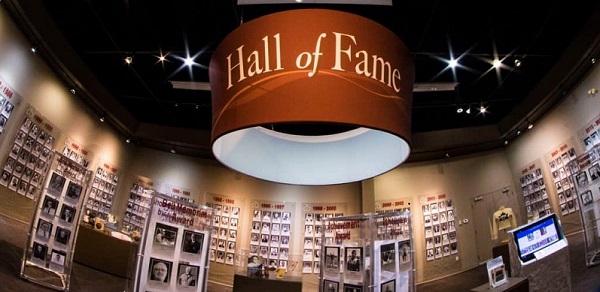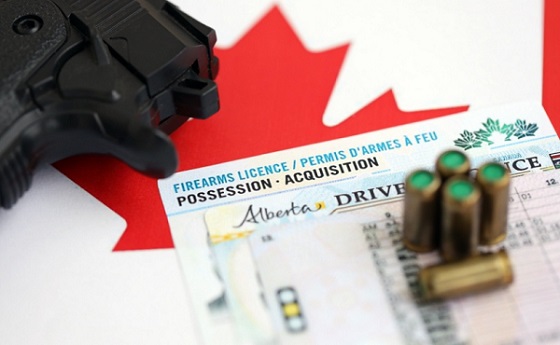Bruce Dowbiggin
iPhone Now Collects Your Mental Health Data
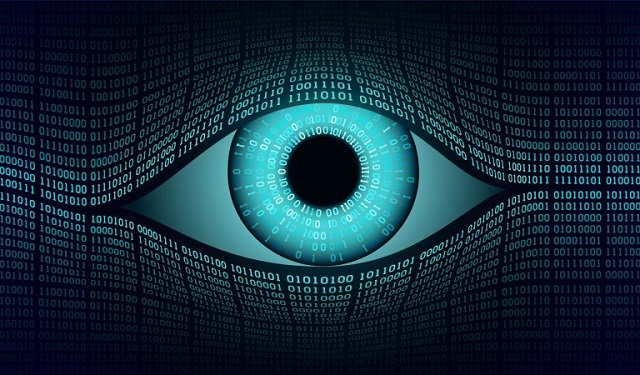
From the Brownstone Institute
By
No data is 100% secure, and this is mental health data. Data that might be extremely embarrassing, career-damaging, or has the potential to disrupt family relationships. Remember, no one knows what new laws, regulations, or more might come to pass years from now.
![]()
True Story: The Health app built into iPhones is now collecting as much personal information on the mental health of each and every one of us as they can get a hold of.
Yet, a search on Google and Brave yielded no results on the dangers of sharing such information over the phone or the internet. Seriously, no single MSM has done an article on why such data sharing might be a bad idea?
To start, in sharing such data, you aren’t just sharing your information; iPhone knows exactly who your family members are. In many cases, those phones are connected via family plans.
iPhone mental health assessments not only ask questions about your mental health but can also infer the mental health status of family members, as demonstrated by the image publicly shared by phone on the benefits of a phone mental health assessment.

What could possibly go wrong?
Although the iPhone has historically been known to keep user data “safe,” this is not a given, and there have been hacks and data breaches over the years.
CrowdStrike happened – from just a simple coding error. In 2015, all of my confidential data given to the DoD and the FBI in order to get a security clearance was harvested by the Chinese government, when they hacked into the government’s “super-secret,” and “super-secure” government data storage site. In response, the government offered me a credit report and monitoring of my credit score for a year. Yeah – thanks.
The bottom line – no data is 100% secure, and this is mental health data. Data that might be extremely embarrassing, career-damaging, or has the potential to disrupt family relationships. Remember, no one knows what new laws, regulations, or more might come to pass years from now. This type of information should not be harvested and stored.
Stay Informed with Brownstone Institute. Sign up for updates.
Furthermore, trusting that Apple will never sell that data or pass it off to research groups is very naive. In fact, mental health data is already being mined.
Apple has partnered with various health organizations and academic institutions to conduct health-related studies, such as Harvard T.H. Chan School of Public Health, Brigham and Women’s Hospital, and the University of Michigan on various health studies. Apple also collaborates with the University of California, Los Angeles (UCLA) on a Digital Mental Health Study. This study likely utilizes data collected through Apple devices to investigate mental health patterns and outcomes. Trusting that the user identifiers have been completely stripped before that data is passed on is a risk that one takes when entering such information into an iPhone.

“Connect with resources.”
So how does Apple benefit? At this time, it appears that Apple is selling advertising of various mental health services by “connecting” services to people’s phones. Apple writes that “These assessments can help users determine their risk level, connect to resources available in their region, and create a PDF to share with their doctor.”
That might mean that if one presses the depressed button in the mental health assessment, Apple will place ads on the search engine for anti-depressants or physicians that prescribe them.
Why would that example be relevant, and which pharmaceutical companies might benefit?
iPhone has developed their mental health assessment with an “educational grant” from Pfizer!

Pfizer manufactures and sells Zoloft, Effexor, Pristiq, and Sinequan formulations. Together the sales revenue for these drugs is in the billions each year:
From 2015 to 2018, 13.2% of American adults reported taking antidepressant medication within the past 30 days, with sertraline (Zoloft) being one of the most common. Even off-patent, there were 39.2 million prescriptions filled with an annual sales revenue of 470 million.
Effexor XR is an antidepressant medication that was originally developed by Wyeth (now part of Pfizer). In 2010, when the first generic version of Effexor XR was introduced in the United States, the brand name product had annual sales of approximately $2.75 billion. By 2013, due to generic competition, Pfizer’s sales of Effexor XR dropped to $440 million.
According to IMS Health data, in 2016, Pristiq (desvenlafaxine) had annual sales of approximately $883 million in the United States, although sales appear to have fluctuated over the years.
The bottom line is that Pfizer is not supplying educational grants to develop mental health assessment software for Apple out of the “goodness of their heart.” Mental health inventions via medication are a big business, and these companies are looking to profit.
This is just one way that Apple is using surveillance capitalism by data mining mental health status and then selling access to that data to Big Pharma, Big Tech, physician and insurance companies, etc.
How this information, which once released or leaked, can never be returned with privacies intact, will be used in the future is unknown.
If the setting for sharing research on health conditions has not been deactivated, this information will go into a database somewhere. It is only Apple’s assurance that your identification has been stripped from the data. Further, your mental health information will be uploaded to the cloud and will be used as a behavioral future. To be shared, packaged, sold, used to influence your decision-making, etc.
I am wary of the highly profitable industry that has been built up around “mental disorders.” Over the years, the American Psychiatric Association and the fields of psychology and psychiatry have hurt individuals and families by both classifying diseases and disorders incorrectly and by developing treatments and therapies that were and are dangerous. Many are still in use. Here are a few examples:
- There are estimates that 50,000 lobotomies were performed in the United States, with most occurring between 1949 and 1952. In 1949, the Nobel Prize in Physiology or Medicine was awarded to António Egas Moniz for his development of the lobotomy procedure.
- Homosexuality was classified as a mental disorder in 1952 with the publication of the first Diagnostic and Statistical Manual of Mental Disorders (DSM-I) by the American Psychiatric Association (APA). It was listed under “sociopathic personality disturbance.” This classification remained in place until 1973.
- Selective Serotonin Reuptake Inhibitors (SSRIs) are a widely prescribed class of antidepressant medications. There is a link between SSRIs and increased risk of violent crime convictions, and other research has shown an increase in self-harm and aggression in children and adolescents taking SSRIs.
- The APA supports access to affirming and supportive treatment for “transgendered” children, including mental health services, puberty suppression and medical transition support.
- The APA believes that gender identity develops in early childhood, and some children may not identify with their assigned sex at birth.
- Asperger’s syndrome was merged into the broader category of autism spectrum disorder (ASD) in the DSM-5 in 2013. Since then, a large number of people have faced discrimination and barriers to entry into higher-paying positions. Children handed such a diagnosis also can suffer a lack of confidence in their ability to manage relationships effectively, which can easily carry on to adulthood.
These are just a few of the many, many ways the American Psychiatric Association and the fields of psychology and psychiatry have gotten things very wrong.
- A survey of more than 500 social and personality psychologists published in 2012 found that only 6 percent identified as conservative overall, implying that 94% were liberal or moderate.
- At a 2011 Society for Personality and Social Psychology annual meeting, when attendees were asked to identify their political views, only three hands out of about a thousand went up for “conservative” or on the right.
The liberal bias in psychology influences findings on conservative behaviors.
To bring this back to the use of software applications and the iPhone mental health app in particular, be aware that these software programs are being developed by people with a liberal bias and who will view the beliefs of conservatives negatively. What this means for future use of this data is unknown, but it can’t be good.
If you do choose to use the mental health applications, which mainstream media has nothing but praise for, be aware – there are alligators in those waters.
But sure that the data sharing mode, particularly giving data access to researchers is turned off. But even then, don’t be surprised if your phone begins planting messages about the benefits, SSRIs, or other anti-depressant drugs into your everyday searches. Or maybe your alcohol use or tobacco use data will be used to supply you with advertisements on the latest ways to reduce intake or how to find a good mental health facility. These messages may very well include neuro-linguistic programming methods and nudging, to push you into treatment modalities. But honestly, it is all for your “own good and for the benefit of your family.”

Now, the iPhone and the watch can be valuable tools. The EKG, blood oxygen, and heart rate monitoring are fantastic tools for those who suffer from cardiac disorders. I have found them to be extremely helpful.
My wife, Jill is often motivated by getting more walking steps each week via her iWatch tracker.
Just be aware that these programs can be invasive. Data is never 100% secure and it is being used. We just don’t know all the details.
Republished from the author’s Substack
Bruce Dowbiggin
Wayne Gretzky’s Terrible, Awful Week.. And Soccer/ Football.

Inquiring minds want to know: Why did FIFA (Federation of International Fraud Artists) award American president Donald Trump a new “Peace Prize” at the Washington D.C. draw for the June/ July tournament? The usual suspects are paralyzed with rage. Everyone else is laughing at the kabuki theatre stunt.
The short answer is that if you were FIFA and you were receiving a reported billion or more dollars from the U.S. and the Canadian/ Mexican cities hosting the 48-team tournament you’d give the host more than a bottle of wine and flowers as a thank-you. Thus the ugly statue and the Boy Scout medal. The obsequious awarding of the prize and match medal were proportionate to the greed of FIFA in extorting the cash.
(America’s fainting goat media immediately complained about unearned awards for little virtue, forgetting as usual that the Nobel folks gave Barack Obama a Peace Prize after nine months in the White House for simply being a black man.)
Trump getting a peace award from FIFA, the most corrupt sports body in the sports world, is mint, however. You can’t write this stuff. (They should give it to him on a speed boat heading across the Caribbean.) The Donald then playfully suggested that Americans leave the name football to the soccer folks because, you know… feet and a ball. More outrage from NFL fans.
So what was the gift for the two Canadian cities hosting games who have also coughed up plenty? Toronto says its estimated budget is $380 million for six games/ B.C. tax payers are obliged to cough up an estimated $580 million for Vancouver’s five games). For cities with, how shall we say, bigger fish to fry.
Sadly all they got was a little farce in which a delighted PM Mark Carney was allowed to Canada as the first ball to start the picking, evidently unaware that all the balls he had to select from also said Canada. Carney’s joy was tempered when he saw Mexican president Claudia Sheinbaum draw a ball that said “Mexico” while Trump— in on the fix— got one entitled “United States”.

In a final attempt to curry favour with the fleeced nations FIFA boss Gianni Infantino gathered the world leaders for a painful onstage selfie, marking the first time Trump and Sheinbaum had ever met in the (orangey) flesh. Call it National Lampoon’s Soccer Vacation.
Having exhausted itself with the peace prize falderol FIFA evidently forgot to put any more thought into the rest of the 55-minute run-up to the draw. While soccer/ footie fans around the world ground their teeth in impatience the organizers presented a combination Eurovision/ People’s choice Awards ordeal of failed cues, untranslated interviews (the Spanish translator showed up about 30 minutes late) and pregnant pauses.
Host Heidi Klum’s stunning gold dress nearly made up for her wooden repartee with comedian Kevin Hart (“not sure why I’m here”) and co-host Rio Ferdinand, former star English defender who, alas, never won the WC. But that was all an appetizer for the real low point, the introduction of global brand stars to pick the draw. NFL legend Tom Brady, NBA legend Shaquille O’Neal and NHL… er, player Wayne Gretzky.
Their task, hectored by the hosts, was to draw a ball, unscrew the thing, withdraw a nation’s name and so on. While there may have been some tension in the audience there was no appreciation of that on the screen as more clunking dialogue and curious pronunciations (Ferdinand kept referring to Group “Haitch”) landed dead on the floor.
The nadir of the ceremony—indeed of his career— was Gretzky’s contribution. Brady and O’Neal had managed to survive their task of unscrewing the ball and pronouncing a name, but Gretzky was brought low by the stage business of the balls and the nations he was forced to announce.

The clearly flustered Gretz (he insisted he’d practiced all morning) wrestled manfully with the balls. Finally the producers went with a long shot of him fumbling in the dark. Then he topped that. Gretzy apparently thinks there are countries called “North Mack-a-donia” and “Cur-ack-ow.” Other stabs at geography were almost as tortured.
Bitter Canadians could put up with him sucking up to Trump (he was mentioned as being in the crowd at the DC Xmas tree lighting) but failing geography is unforgivable. The week that started with Gretzky in a photo golfing at POTUS’s Jupiter, Florida, golf course was ending with him pummelled for his abuse of nations with different-sounding names. The Wayne Gretzky Center For Kids Who Want To Talk Good.
The moral: Never send a centre to do a netminder’s job. Makes you understand why Bobby Orr has laid low since his Trump endorsement came out.
With that bracing date with immortality disposed of the draw proceeded. We had been pounded for an hour about how great the tournament was, and finally footy fans got what they wanted. As a host Canada got a bye into the field. Their reward is playing the tenacious Swiss and, gulp, probably Italy, which is forced to qualify after playing with their food for too long. (Insert your Stanley Tucci joke.)
If not Italy then one of Wales, Bosnia and Herzegovina or Northern Ireland. Oh, right Qatar is in there too as fodder. Been nice knowing you, Canada. The Americans somehow drew a creme puff quartet of Australia, Paraguay and Slovakia, Kosovo, Turkey or Romania. Money can’t buy you love, but it can get you a warm hug from FIFA.
In the end it’ll be one of Brazil, Argentina, Germany or France for the final in the NJ Meadowlands on July 19. Maybe they’ll have a spelling bee at halftime. Or maybe they’ll bring back Trump for the final game to give him another peace prize. Just don’t ask Gretzky to announce Lothar Matthaus, Bruno Guimaräes or Gabriel Magalhäes.
Bruce Dowbiggin @dowbboy is the editor of Not The Public Broadcaster A two-time winner of the Gemini Award as Canada’s top television sports broadcaster, his new book Deal With It: The Trades That Stunned The NHL And Changed hockey is now available on Amazon. Inexact Science: The Six Most Compelling Draft Years In NHL History, his previous book with his son Evan, was voted the seventh-best professional hockey book of all time by bookauthority.org . His 2004 book Money Players was voted sixth best on the same list, and is available via brucedowbigginbooks.ca.
Bruce Dowbiggin
Integration Or Indignation: Whose Strategy Worked Best Against Trump?

““He knows nothing; and he thinks he knows everything. That points clearly to a political career.” George Bernard Shaw
In the days immediately following Donald Trump’s rude intervention into the 2025 Canadian federal election— suggesting Canada might best choose American statehood— two schools of thought emerged.
The first and most impactful school in the short term was the fainting-goat response of Canadian’s elites. Sensing an opening in which to erode Pierre Poilievre’s massive lead in the 2024 polls over Justin Trudeau, the Laurentian elite concocted Elbows Up, a self-pity response long on hurt feelings and short on addressing the issues Trump had cited in his trashing of the Canadian nation state.
In short order they fired Trudeau into oblivion, imported career banker Mark Carney as their new leader in a sham convention and convinced Canada’s Boomers that Trump had the tanks ready to go into Saskatchewan at a moment’s notice. The Elbows Up meme— citing Gordie Howe— clinched the group pout.

(In fact, Trump has said that America is the world’s greatest market, and if those who’ve used it for free in the past [Canada] want to keep special access they need to pay tariffs to the U.S. or drop protectionist charges on dairy and more against the U.S.)
The ruse worked out better than they could have ever imagined with Trump even saying he preferred to negotiate with Carney over Poilievre. In short order the Tories were shoved aside, the NDP kneecapped and the pet media anointed Carney the genius skewing Canada away from its largest trade partner to the Eurosphere. We remain in that bubble, although the fulsome promises of Carney’s first days are now coming due.
Which brings us to the second reaction. That was Alberta premier Danielle Smith bolting to Mar A Lago in the days following Trump’s comments. Her goal was to put pride aside and accept that a new world order was in play for Canada. She met with U.S. officials and, briefly, with Trump to remind them that Canada’s energy industry was integral to American prosperity and Canadian stability.
Needless to say, the fainting goats pitched a fit that not everyone was clutching pearls and rending garments in the wake of Trump’s dismissive assessment of his northern neighbours. Their solution to Trump was to join China in retaliatory tariffs— the only two nations to do so— and to boycott American products and travel. Like the ascetic monks they cut themselves off from real life. Trump has yet to get back to Carney the Magnificent

And Smith? She was a “traitor” or a “subversive” who should be keel hauled in the North Saskatchewan. For much of the intervening months she has been attacked at home in Alberta by the N-Deeps and in Ottawa by just about everyone on CBC, CTV, Global and the Globe & Mail. “How could she meet with the Cheeto?”
Nonetheless conservatives in the province moved toward a more independence within Canada. Smith articulated her demands for Alberta to prevent a referendum on whether to remain within Confederation. At the top of her list were pipelines and access to tidewater. Ergo, a no-go for BC’s squish premier David Eby who is the process of handing over his province to First Nations.
It became obvious that for all of Carney’s alleged diplomacy in Europe and Asia (is the man ever home?) he had a brewing disaster in the West with Alberta and Saskatchewan growing restless. In a striking move against the status quo, Nutrien announced it would ship its potash to tidewater via the U.S., thereby bypassing Vancouver’s strike-prone, outdated port and denying them billions.

Suddenly, Smith’s business approach began making eminent good sense if the goal is to keep Canada as one. So we saw last week’s “memorandum of understanding” between Alberta and Ottawa trading off carbon capture and carbon taxes for potential pipelines to tidewater on the B.C. coast. A little bit of something for everyone and a surrender on other things.
The most amazing feature of the Mark Carney/Danielle Smith MOU is that both politicians probably need the deal to fail. Carney can tell fossil-fuel enemy Quebec that he tried to reason with Smith, and Smith can say she tried to meet the federalists halfway. Failure suits their larger purposes. Which is for Carney to fold Canada into Euro climate insanity and Smith into a strong leverage against the pro-Canada petitioners in her province.
Soon enough, at the AFN Special Chiefs Assembly, FN Chief Cindy Woodhouse Nepinak told Carney that “Turtle Island” (the FN term for North America popularized by white hippy poet Gary Snyder) belongs to the FN people “from coast to coast to coast.” The pusillanimous Eby quickly piped up about tanker bans and the sanctity of B.C. waters etc.
Others pointed out the massive flaw in a plan to attract private interests to build a vital bitumen pipeline if the tankers it fills are not allowed to sail through the Dixon Entrance to get to Asia.
But then Eby got Nutrien’s message that his power-sharing with the indigenous might cause other provinces to bypass B.C. (imagine California telling Texas it can’t ship through its ports over moral objections to a product). He’s now saying he’s open to pipelines but not to lift the tanker ban along the coast. Whatever.
Meanwhile the kookaburras of isolation back east continue with virtue signalling on American booze— N.S. to sell off its remains stocks — while dreaming that Trump’s departure will lead to the good-old days of reliance on America’s generosity.
But Smith looks to be wining the race. B.C.’s population shrank 0.04 percent in the second quarter of 2025, the only jurisdiction in Canada to do so. Meanwhile, Alberta is heading toward five million people, with interprovincial migrants making up 21 percent of its growth.
But what did you expect from the Carney/ Eby Tantrum Tandem? They keep selling fear in place of GDP. As GBS observed, “You have learnt something. That always feels at first as if you have lost something.”
Bruce Dowbiggin @dowbboy is the editor of Not The Public Broadcaster A two-time winner of the Gemini Award as Canada’s top television sports broadcaster, his new book Deal With It: The Trades That Stunned The NHL And Changed hockey is now available on Amazon. Inexact Science: The Six Most Compelling Draft Years In NHL History, his previous book with his son Evan, was voted the seventh-best professional hockey book of all time by bookauthority.org . His 2004 book Money Players was voted sixth best on the same list, and is available via brucedowbigginbooks.ca.
-

 espionage2 days ago
espionage2 days agoWestern Campuses Help Build China’s Digital Dragnet With U.S. Tax Funds, Study Warns
-

 Bruce Dowbiggin2 days ago
Bruce Dowbiggin2 days agoWayne Gretzky’s Terrible, Awful Week.. And Soccer/ Football.
-

 Health2 days ago
Health2 days agoCDC Vaccine Panel Votes to End Universal Hep B Vaccine for Newborns
-
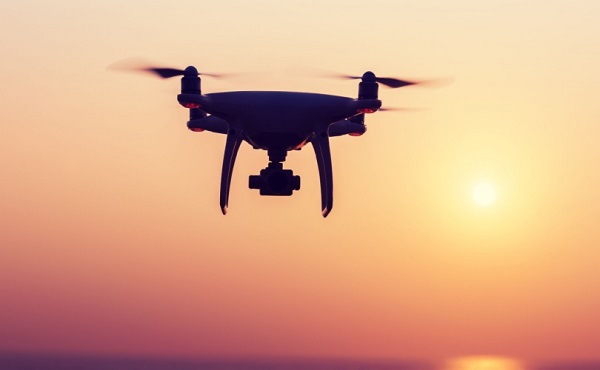
 Business1 day ago
Business1 day agoCanada invests $34 million in Chinese drones now considered to be ‘high security risks’
-

 Agriculture2 days ago
Agriculture2 days agoCanada’s air quality among the best in the world
-

 Business2 days ago
Business2 days agoThe EU Insists Its X Fine Isn’t About Censorship. Here’s Why It Is.
-

 Great Reset1 day ago
Great Reset1 day agoSurgery Denied. Death Approved.
-
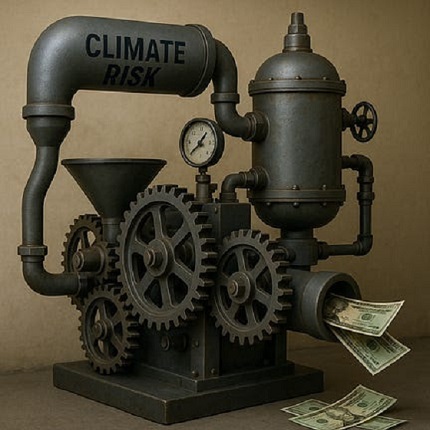
 Business1 day ago
Business1 day agoThe Climate-Risk Industrial Complex and the Manufactured Insurance Crisis








